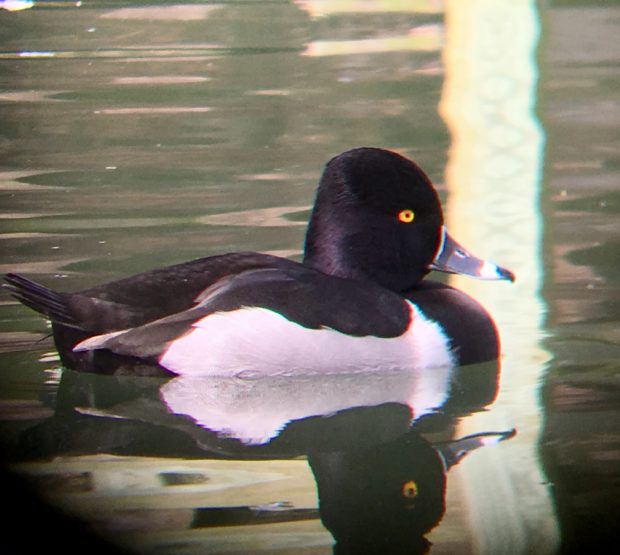Welcome to The Year of the Bird!
We here at the Houston Zoo are very excited to be participating in monthly events to get the word out on how important and cool birds are. The month of February is when The National Audubon Society does their Great Backyard Bird Count. This count helps researchers at the Cornell Lab of Ornithology and the National Audubon Society learn more about how birds are doing, and how to protect them and the environment. A bunch of us at the Zoo love to go out on our time and bird watch. So, we thought it would be fun to give you some bird watching tips.
- Find a good field guide. The ones we like here, are Sibley’s Guide to Birds and National Geographic Field Guide to the Birds of North America. Peterson Field Guide to the Birds of North America is a classic. But if you want photograph’s instead of drawings, The Stokes Field Guide to the Birds of North America and the Kaufman Field Guide to the Birds of North America are the way to go. There are also some great field guide apps.
2. Get a decent pair of binoculars. For birding you want a magnification of 8 or 10. So look for a pair that says it is 8×42 or 10×42, for example. Binoculars fit everybody’s eyes differently, so head to a sporting goods store and try a few out. They also come in a large price range, but there are some good, inexpensive ones out there. And don’t forget that strap!
- Find out what to expect to find. If you are going to a park (and Texas has some awesome state and local parks) see if they have a checklist. Some of them have them online and some you can pick up at the ranger offices. These checklists will tell what you may see while visiting a park. They are usually categorized by time of year you may see the bird and how common they are.
There are also some websites that tell you birds you can find in your area if you are doing some backyard or roadside birding.
- Learn the four-step of identification. What is the bird’s size and shape; what its main color pattern; take note of its behavior; and factor in what habitat it’s in. Do a little research on where the birds will be. Are they going to be in the tree tops, on the ground, or in the water for example. The internet and your field guide should be able to help with this. Don’t want to be wasting your time looking for an arboreal dwelling bird if you are in scrublands or a duck in the desert.
5. Find a birding group. Your local Audubon website, can let you know if there are groups or trips in your area. Like us here at the zoo, birders love to talk about birds.
- Record your sightings. Buy a diary to help you keep track of what and where you have seen birds. There are so many birds, it is easy to forget what you have seen. There are also apps for that. The Ebird app is a great one and you can use it to let other birders know what you have seen.

Houston is a wonderful place for birding because we are on the migratory bird route. You can see many varied species in the area. We took a thirty-minute walk just around Herman park a few days ago and saw 17 different species. From water birds like Ring- billed ducks, Pie – billed grebes, Gadwalls, American coots, Black- bellied whistling ducks and both Double crested and Neo tropic cormorants, to Robins, Yellow – rumped warblers, Pine warblers, Cardinals and Blue Jays. We even saw a juvenile Bald eagle flying with a Red – tailed Hawk.
So, get out there, enjoy nature, and go birding!

